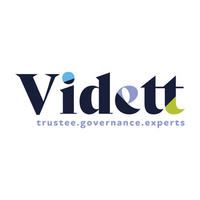Financial education, guidance and advice – how to create the best blend for your employees
Until you really know who they are, you’ll never find the best blend. That’s because you need to target messages, methods, timing and everything else to each particular audience. Age, sex, role, income, working history, education, family, friends, hobbies… all affect what’s important to an individual and how, when and where they’ll engage with financial education.

Drilling into the data
Answering the question may take a bit of time and effort, but it’s time well spent. Be smart; think about the data you have. Your HR system is the gateway to your ‘big data’ world. Use the information you have to group employees with similar characteristics, then assume nothing! Being employed or ‘older’ or a high earner or well educated doesn’t mean they’ll have finances under control. The reality is people don’t think about their financial future or care about it as much as we think they should.
We’ve said it for years, but one size doesn’t fit all. The best blend of financial education will be personalised, targeted and timely for each individual (or employee group) – and emailing staff a copy of a poster you’ve put up on the office/canteen wall doesn’t count as tailoring.
Putting employees in control
Get employees involved before you actually start (or review) your advice and guidance programme. Get a volunteer from each group on board with the project. No-one can tell you better what’s important and what will work than that person/group themselves. We hear people talking about finance like “why weren’t we taught this in school?” or “they need to teach you how to live in the real world”. Ask your volunteers what they’d tell their younger self about finance and about the finance questions they’ve always wanted to ask but been too afraid to.
Think about life outside of work as an everyday consumer. How will your employees make decisions about what to buy and where to go on holiday? People are getting more used to being able to choose and feeling empowered to make that choice. Bring that to your financial education programme. Put them in control.
Getting the message across at the right time
Putting employees in control and giving them choice clearly points us towards needing a complete range of communications. Hard copy, online, face-to-face (group or one-to-one), PDF (preferably interactive), videos, guides, posters, games, nudges. Most employers will need to offer a complete range to suit the needs of all their employees. However, you don’t need to reinvent the wheel every time, content can be re-worked for re-use across multiple media but don’t simply repeat the same words and phrases. Mix messages, style and vocabulary.
What’s crucial is much of what you do offer needs to be available for the employee to use at a time that suits them. Recent Punter Southall Aspire research showed 44% of under 45s will do financial housekeeping on their lunchbreak but for over 45s the figure is only 20%.
You still need to get employees hooked to start them on their ‘I choose’ education journey. That’s where your volunteers can really help. What key questions or messages would spark their interest? What do they talk about in the pub? What drives or concerns them? We all like a good story, so use them to help you build some stories to bring financial education to life.
Make the story relevant
Many people find thinking about savings and investment boring. It isn’t about now – and the future’s too far off to be interesting. Or is it? Children are walking out of lessons and Extinction Rebellion are halting traffic in London with a bright pink boat to protest about political inaction on climate change. They are audiences engaged in getting action taken now to make change for a better future. What can we learn?
Action today can make a difference, influence others and be the catalyst for a more positive future. Translate this into a relevant story: choosing where to invest your pension savings is like making a choice about recycling. They have an impact. If you care about the environment, where do you want your money (and your rubbish) to go or not go?
Test your communications
Finally, make use of something from the digital marketers toolkit – split testing. It’s well worth it if you have the time, particularly for key emails, posters etc promoting your financial education programme. Try out new layouts or techniques, change the call to action or think about who the communication is coming from. Testing will tell you which messages and images are going to have the most impact with each employee group and therefore increase engagement and action.
The author is Suzi Lowther, director of marketing and communications at Punter Southall Governance Services.
This article is provided by Punter Southall Governance Services.
Supplied by REBA Associate Member, Vidett
Leading the way in professional trusteeship & governance







